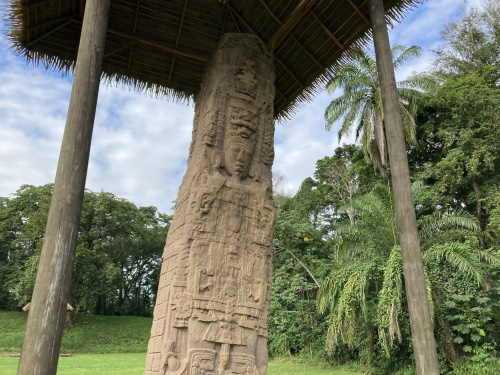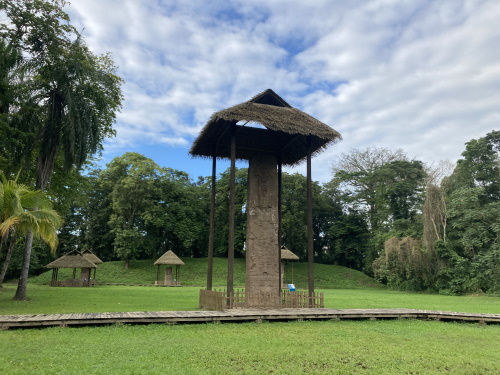Blog WHS Visits
WHS #780: Quirigua
This site hasn’t been reviewed for 13 years, so I think Quiriguá deserves to be put into the spotlights. With this visit, I also completed the list of 9 WHS connected to Mayan culture. And every time you think: “I’ve seen so many Maya sites already, what can this one possibly add?” But they all have different qualities. Quiriguá has the best-preserved sculptures.
The Quiriguá archaeological park has suffered severe hurricane damage from Eta and Iota in 2020 and has only reopened in June 2021. They had to remove 12 swimming pools full of mud and water, which left certain areas flooded up to 1.8m.
During my visit in February 2022, nothing of that damage was visible anymore and the site looked very well cared for. At the entrance, you get a site-specific ticket and a booklet in English (both rare in Mexico or Central America). Signage is in both Spanish and English. There is a (new?) boardwalk that takes you along the monuments, so you don’t have to walk on the grass. It had been raining for 2 hours before my visit, and the ground had turned soggy again.
The site comprises a plaza where the sculptures have been resurrected and an acropolis with a few ruined buildings and a ball court. Parts of the site are also unexcavated, you can see unnatural hills where something must be hidden underneath. The sculptures often had fallen down or were broken when they were rediscovered in the late 19th century, they have all since been restored and each one has a thatched cover against the elements.
Directly on the first stele, I discovered something peculiar: historical graffiti from 1881. 1881 was an ominous year in the history of Quirigua, as that was when the British explorer and archaeologist Alfred Maudslay first visited. He later recorded all the monuments in detail and made paper and plaster molds of the hieroglyphic inscriptions, which were shipped to the Victoria and Albert Museum and the casts to the British Museum. It wasn’t Maudslay who made the graffiti, but in his recordings, he also referred to them.
All stelae are in exquisite condition and by far the best ones I have seen at any Maya site, even better than Copán. The site also specializes in zoomorphic and anthropomorphic sculptures, which are very good as well. The Acropolis isn’t a match for any of the other Maya sites – you really have to come to Quirigua for the stone carvings. The complex isn’t large, it takes about an hour to see it all. The site is open daily between 8 and 16.30. The area is also good for birds and I saw an agouti as well.
Quirigua lies in the south of Guatemala, only 4km from the main road that crosses the south; so with a rental car, it’s an easy visit. By public transport it also isn’t that hard: I went by bus from Guatemala City to Los Amates (4.5h with a fairly luxury coach by Litegua). From Los Amates you can take a tuk-tuk to the site, a few kilometers further along the road. To continue your journey after the visit, go to the next town Morales and catch a bus north from there for example to Flores (5.5h with Fuente del Norte, for me it included free training in staying zen because of 8(!) police checks and 2 preachers on the bus).
Before moving on, I stayed overnight at the Posada de Quirigua. This small lodge in Quirigua village is owned by a Japanese woman and has been running for 17 years. It is basic but clean and has useful amenities like hot water, wifi, and hammocks. She cooked me a wonderful Japanese dinner as well (it’s not easy to get soy sauce, nori, or even rice in rural Guatemala!). The posada cannot be found via the generic booking sites, do contact her via her own website if you want to stay there.
Els - 13 March 2022


